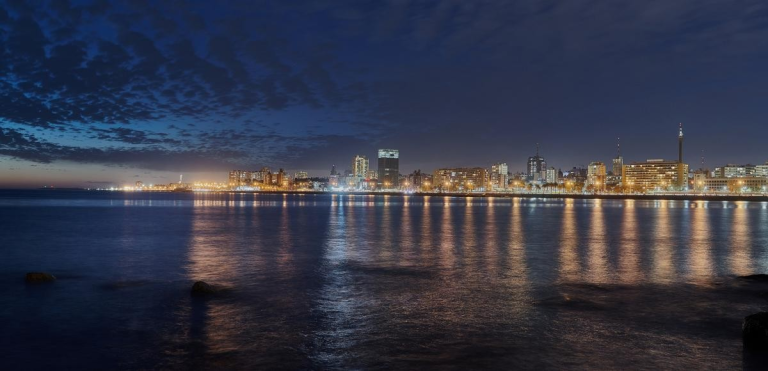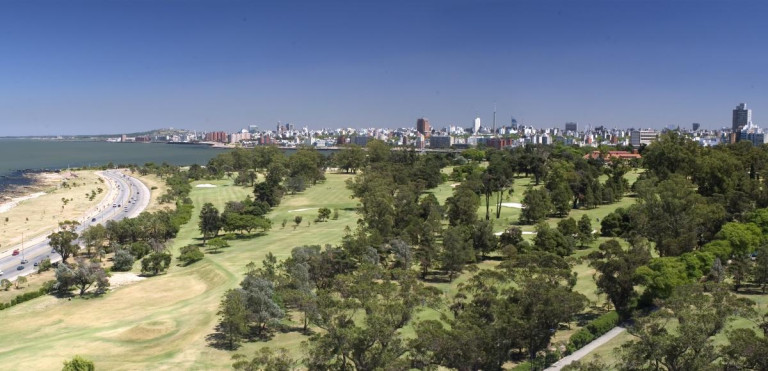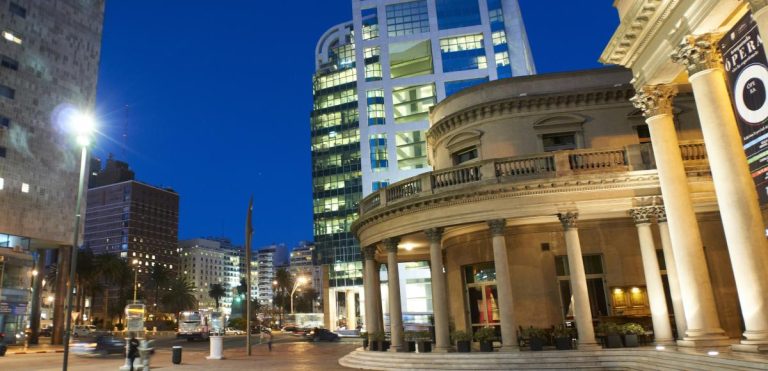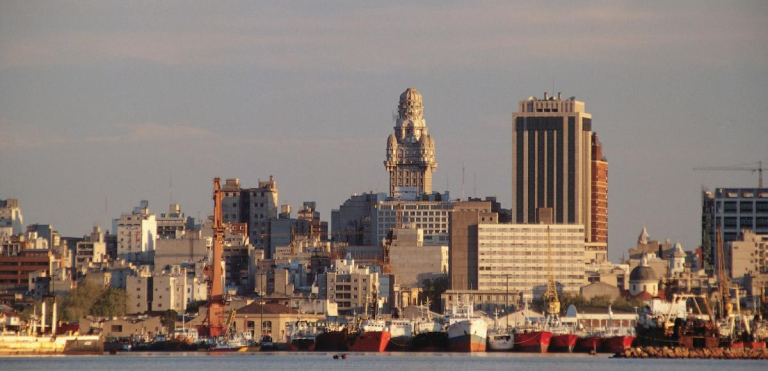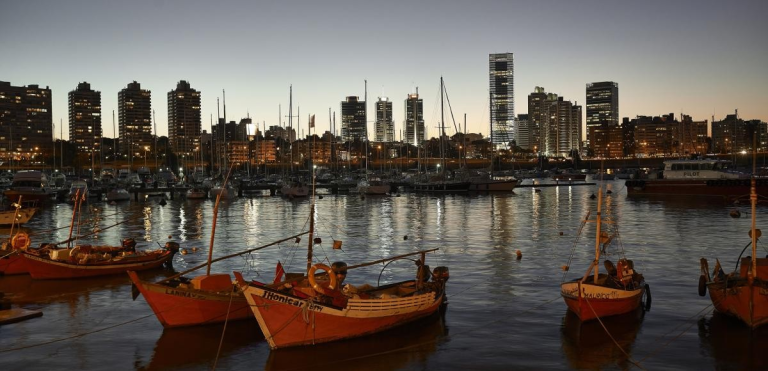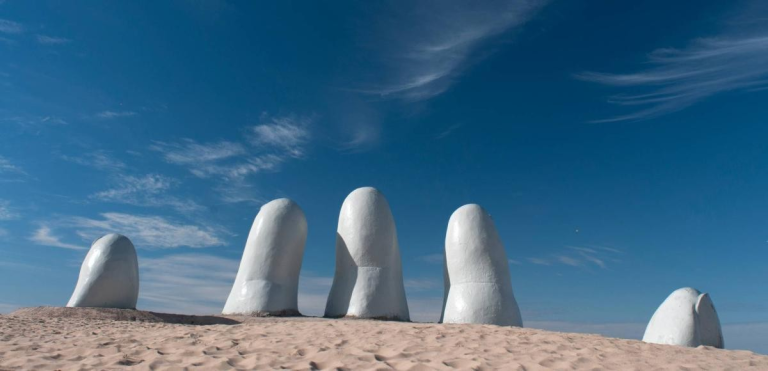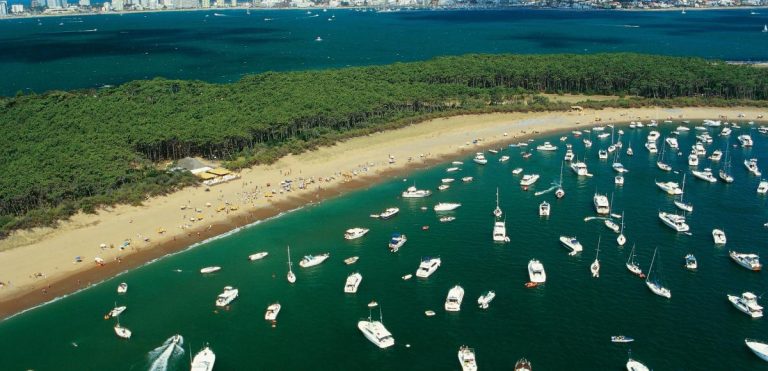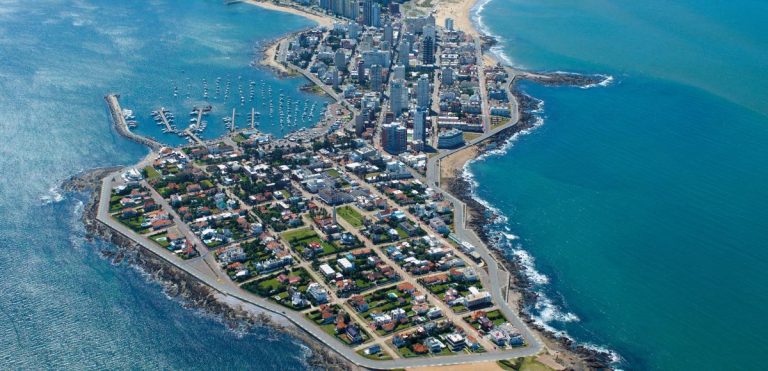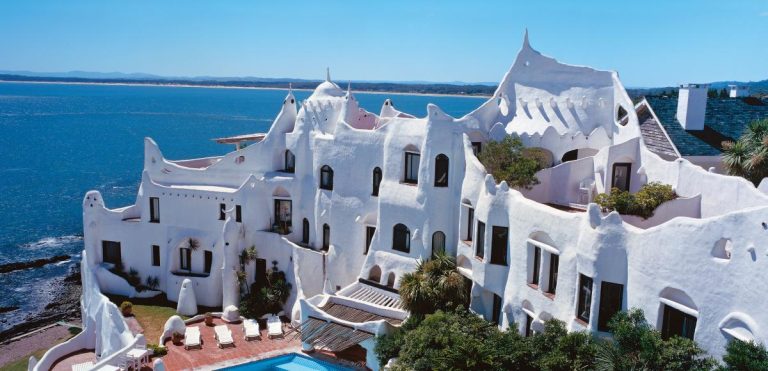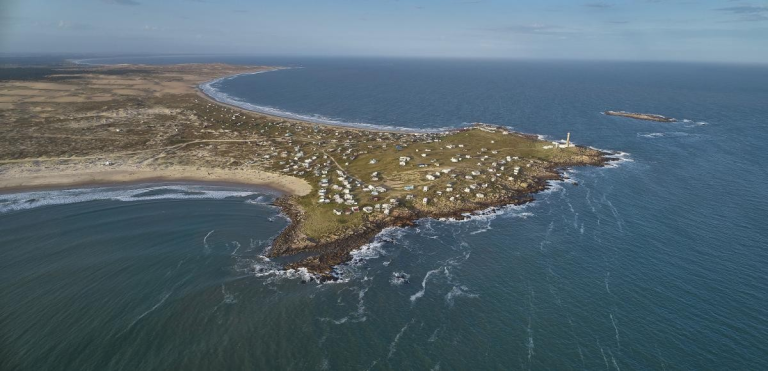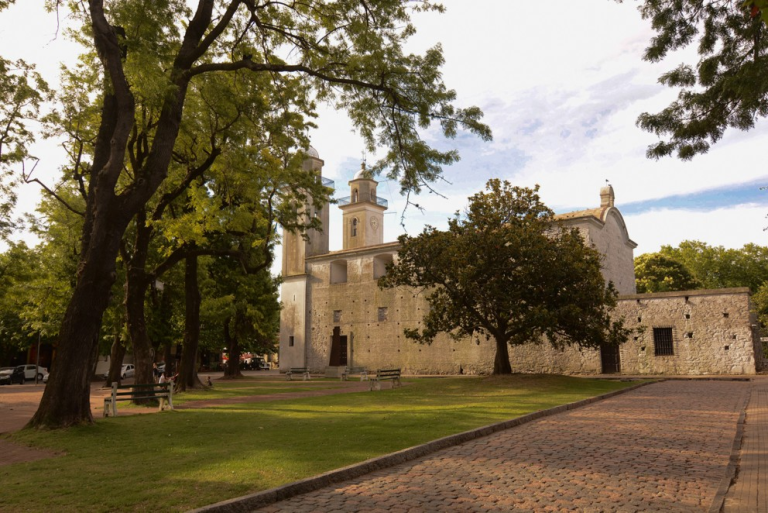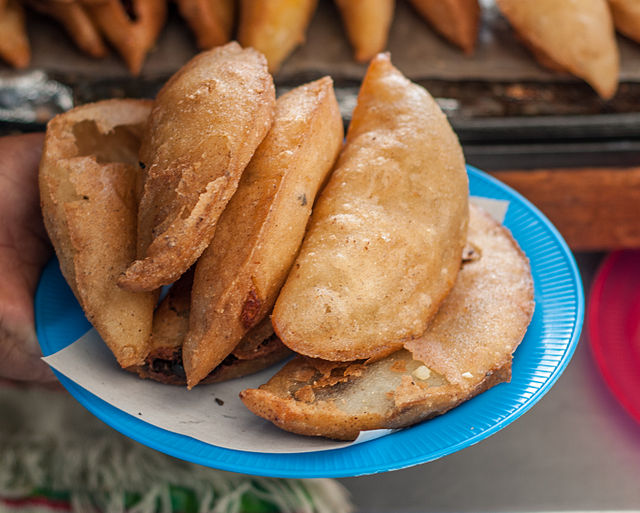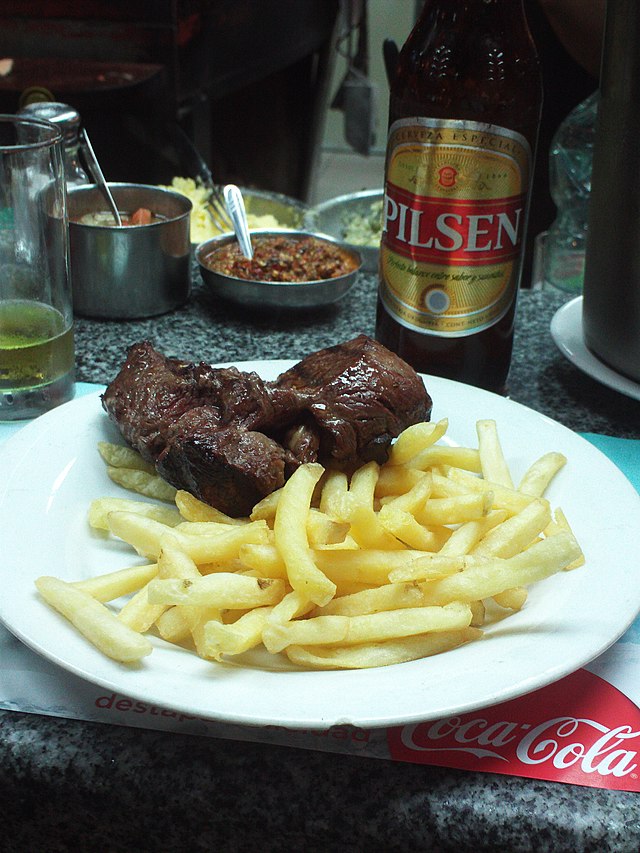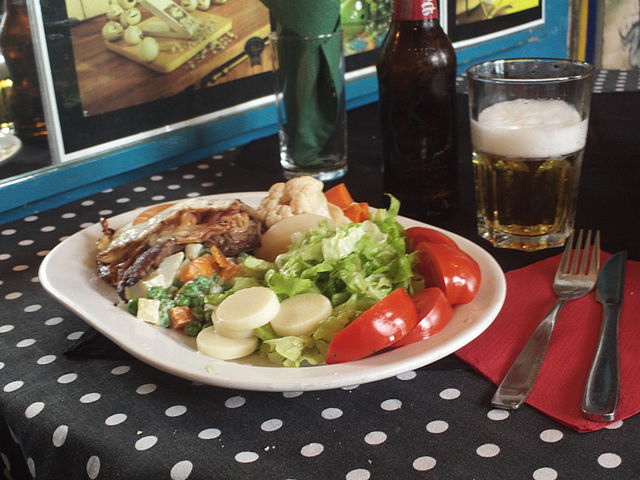In the heart of South America, nestled along the Atlantic coast between two giants—Brazil and Argentina—lies a small yet remarkable jewel that more and more travelers are beginning to discover: Uruguay.
Often overlooked in traditional tourist itineraries, this country surprises visitors with its high quality of life, rich cultural heritage, authentic cuisine, and a laid-back atmosphere that captivates from the very first glance. With landscapes ranging from golden beaches to historic cities and lush countryside, Uruguay is rapidly emerging as one of Latin America’s most fascinating up-and-coming destinations.
Montevideo by night
Golf promenade – Montevideo
Montevideo, the capital of Uruguay, is not only the main gateway to the country but also one of the most charming and welcoming cities in South America. Strategically located on the northern shore of the Río de la Plata, it hosts one of the busiest cruise ports on the continent, welcoming thousands of visitors from around the world each year. Despite the increasing flow of tourism, Montevideo has managed to retain an intimate atmosphere, where modernity and tradition coexist in perfect harmony. A stroll along the Rambla, the city’s iconic waterfront promenade that stretches for more than 20 kilometers, is perhaps the most authentic way to connect with Montevideo’s soul. This coastal avenue is more than a scenic path—it’s a vibrant social hub: families, couples, street performers, fishermen, and joggers animate it at all hours of the day. In the historic center, Ciudad Vieja, time seems to have stood still. Its cobbled streets are lined with restored colonial buildings, hidden courtyards, artsy cafés, and galleries showcasing the work of young local creatives. It’s a lively district full of culture and memory, where the city’s Portuguese and Spanish roots come together, and every corner tells a story.
No visit would be complete without experiencing the Mercado del Puerto, the beating heart of Montevideo’s gastronomy. Here, amid the aroma of wood-fired grills and the voices of chefs hard at work, visitors can enjoy a truly authentic taste of Uruguayan culinary tradition. The parrilladas—hearty mixed grills—are the undisputed stars of the show: beef, sausages, lamb, and vegetables are cooked over open flames following age-old rituals and served with rustic simplicity, often accompanied by a glass of Tannat, Uruguay’s signature red wine. The port itself, modern and well-equipped, has made Montevideo a key stop on major South American cruise routes. It’s the perfect starting point for exploring not only the capital but also the country’s inland treasures and coastal wonders. Ships docking here bring travelers eager to discover a city that knows how to surprise with its quiet elegance, its warm-hearted people, and its vibrant cultural spirit.
Montevideo is also a vibrant cultural hub, where theater, literature, and music thrive in a dynamic and creative atmosphere. The Solís Theatre, inaugurated in 1856, is one of the most prestigious theaters on the continent. Murga and candombe are two uniquely Uruguayan musical and theatrical art forms—popular expressions that reach their full intensity during Carnival, the longest in the world, lasting over 40 days.
Teatro solis
Palacio Salvo
Puerto del Buceo – Montevideo
About a two-hour drive from Montevideo lies Punta del Este, one of South America’s most iconic and exclusive destinations, often compared to the famed French Riviera town of Saint-Tropez. This renowned seaside resort is a symbol of elegance and sophistication, attracting travelers from across the globe in search of relaxation, entertainment, and a touch of luxury. Known for its pristine beaches and cosmopolitan atmosphere, Punta del Este perfectly embodies the South American dolce vita, with its high-end resorts, stylish boutiques, historic casinos, and trendy nightclubs that come alive after dark. The city is symbolically divided between two legendary beaches: Playa Brava, with its powerful Atlantic waves and the iconic sculpture La Mano—a giant hand emerging from the sand that has become one of Uruguay’s most photographed landmarks; and Playa Mansa, caressed by calmer waters, ideal for swimming, unwinding, and enjoying breathtaking sunsets over the Río de la Plata. This contrast between energy and tranquility beautifully reflects Punta del Este’s eclectic spirit, offering every visitor their own perfect slice of paradise.
To the west, on the banks of the Río de la Plata, lies Colonia del Sacramento, one of the country’s most charming towns and a UNESCO World Heritage Site. Founded by the Portuguese in the 17th century, Colonia is like a journey through time. Its cobblestone streets, ancient ramparts, and pastel-colored low houses tell centuries of history shaped by colonial rivalries. Strolling through the Barrio Histórico is an intimate, almost meditative experience. Flower-filled courtyards, quaint cafés, local museums, and art galleries create a romantic atmosphere, perfect for those seeking authenticity and peace.
Los Dedos, playa brava punta del este
Gorriti island – Punta del este
Punta del este
Casapueblo – Punta del este
Uruguay is a nation proud of its roots and open to the world. Its culture is deeply connected to the figure of the gaucho, the iconic cowboy of the pampas, a symbol of freedom and national identity. The estancias—traditional rural estates scattered across the country—offer immersive experiences to discover this fundamental part of Uruguayan heritage, with horseback riding, campfire evenings, and rustic local cuisine.
Uruguayan cuisine is a celebration of simple, genuine flavors. The undisputed star is the asado, a barbecue that is far more than just a meal—it’s a social ritual. On weekends, parrillas (grills) are fired up everywhere: among families, with friends, or in traditional restaurants. Alongside the meats, you’ll find empanadas, chivitos (hearty sandwiches filled with meat, ham, cheese, and eggs), and dulce de leche, the unchallenged king of Uruguayan desserts. Another national symbol is mate, a traditional drink made from dried yerba leaves, sipped through a metal straw called a bombilla. But mate is more than a drink—it’s a communal ritual, a gesture of friendship and connection that is an everyday part of life in Uruguay.
Beyond its cities, Uruguay offers an incredible variety of natural landscapes. The countryside in the Canelones region is ideal for food and wine tourism, with vineyards producing the celebrated Tannat, a robust and aromatic red wine now considered among the best in South America. For those who love unspoiled nature, the north of the country unveils breathtaking vistas. Natural parks such as Quebrada de los Cuervos or Esteros de Farrapos offer opportunities for hiking, birdwatching, and observing native flora and fauna in pristine settings. The Atlantic coast, from La Paloma to Cabo Polonio, is perfect for lovers of surfing, meditation, and eco-friendly travel. Cabo Polonio, in particular, is a near-mystical place: with no electricity and no paved roads, it can only be reached by off-road vehicle and rewards visitors with unforgettable starry skies and wild, untouched beaches.
Cabo polonio
Colonia del Sacramento
Uruguay has a fascinating history, shaped by conquests, independence, and remarkable political figures. The country gained its independence in 1828 after a series of conflicts with Spain, Brazil, and Argentina. Since then, it has forged a strong and autonomous identity based on democracy, secularism, and civil rights. In the 20th century, Uruguay was among the first countries in the world to implement progressive policies in education, labor, and healthcare. Even today, it is considered a model for political stability and social equity in South America. Former president José “Pepe” Mujica has become a global symbol of humility and political integrity.
One of Uruguay’s greatest strengths is its people. Uruguayans are known for their kindness, warmth, and strong sense of community. Even solo travelers will quickly feel at home, thanks to the country’s relaxed and tolerant social atmosphere. Uruguay is also one of the safest countries on the continent, with low crime rates and well-developed tourist infrastructure. This makes it an ideal destination for all kinds of travelers, from families to adventure seekers.
11. Empanadas, typical food in Salto, Uruguay
Asado-tipical-food-in-Salto-Uruguay
12. Chivito al plato, typical food in Salto, Uruguay
In an increasingly globalized world, where many destinations begin to look and feel alike, Uruguay quietly stands out as a place that proudly preserves a strong, authentic, and deeply rooted identity. It’s not the kind of country you rush through with a checklist of sights. Uruguay is meant to be experienced slowly—savored one detail at a time, allowing yourself to be immersed in its gentle pace and the warmth of its people. It’s a land that speaks to those in search of authenticity, offering real experiences far from the most crowded tourist circuits, where every encounter and every flavor tells a genuine story. Uruguay is also a haven for lovers of living, breathing culture—music that fills the streets, theaters that celebrate both tradition and innovation, a Carnival that bursts with energy, and a rich history that lives on in the ancient walls of its cities.
Anyone who visits Uruguay is bound to fall in love with its simple yet flavorful cuisine, made from local ingredients, shared over convivial grills, and passed down through generations. Whether in bustling city markets or remote rural kitchens, every meal is a cultural experience. And then there’s the nature—real, unspoiled nature—made up of endless beaches, gentle hills, vineyards stretching to the horizon, and skies so clear they feel within reach. But perhaps what stands out the most is the sense of safety and genuine hospitality that you feel from the very first moment—a human warmth made of sincere smiles, of people who take the time to talk, to share a mate or a story.
Don’t miss news, updates, and reviews from the world of cruises on Cruising Journal, with photos, videos, and special cruise deals.

